LAKEWOOD SPEEDWAY - ATLANTA GA

In 1916, Atlanta officials chose the Lakewood Fairgrounds as the site for agricultural fairs. They built a one-mile horse racing track around a lake at the fairgrounds. The first events were held at the track on July 4, 1917. The feature events were a horse race and motorcycle race, before 23,000 spectators. The first automobile race was held at the track later that year; it featured Barney Oldfield in a match race against Ralph DePalma which attracted 15,000 spectators. In the 1920s and 1930s, the International Motor Contest Association (IMCA) held car racing events during fairs and the American Automobile Association (AAA)/USAC held an annual event on July 4th. By 1938, the track was hosting races with champ cars, horses, midgets, modifieds, motorcycles, and boats (in the infield lake). The track closed in 1941, like all United States racetracks, because the U.S. government banned
all automobile racing to conserve materials during World War II. Racing resumed after the war; Lakewood became the premier track on the National Stock Car Racing Association circuit. Most of the infield was the lake, which made the track dangerous when drivers made a mistake. Several drivers died in crashes at the speedway. Following the NSCRA's folding, NASCAR held its first race at the track in 1951. The first NASCAR race there. The track was still a one mile dirt track, and the Cup drivers would run 100 laps around the famous speedway. Frank Mundy started on the pole and led the first lap. But he couldn't hold off Bob Flock as he swept by on lap two. He only led 12 circuits before brother Tim Flock bypassed him and led the final 87 laps to get the win. Bob was second, Jack Smith came in third, with Mundy fourth, and local
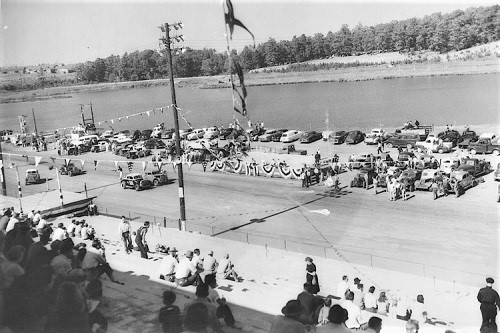
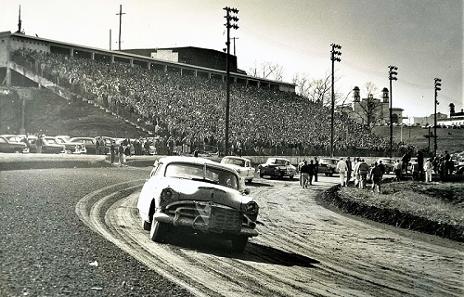
Dawsonville resident, Gober Sosebee was fifth. The 1952 race it seemed to be bad luck to lead the event. Pole sitter Tim Flock looked like he would repeat as race winner. But after 60 laps, he broke an axel and finished 15th. Roscoe Thompson picked up the lead at that point, but he too would fall victim, as he burnt up a rear hub and finished 14th. Then Sosebee looked like he might win, as he took the lead and with just a hand full of laps remaining, he broke a spindle and ended up ninth. Bill Blair would swoop in and lead the final seven laps to get his second career Cup win. Ed Samples was second, Lee Petty third and Buck Baker fourth. Ed Benedict would finish fifth, posting his best career finish. The Cup series would be back in November of 1952; and little heard of Donald Thomas,
would claim his only career Cup win. He was the younger brother of NASCAR Champ Herb Thomas. 1953 saw Buck Baker lead the first 84 laps, before having issues and falling out to finish seventh. Herb Thomas was there to pick up the pieces and lead the final 16 laps to get the win. Thomas would win again in 1954 and he edged out Buck Baker by one car length. Baker had picked up the win the previous race in November of 1953. No race was held in 1955; but when the stars returned in 1956; fans saw more of the same as in the past. Buck Baker would get the win, while Speedy Thompson was second and Herb Thomas third. NASCAR visited the track twice in 1958. Like many
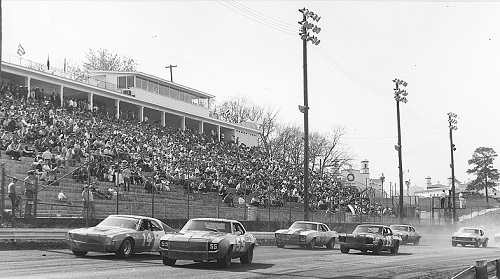
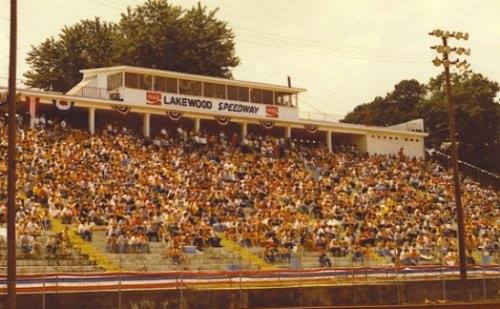
races before, Tim Flock was leading in April, when he had a mechanical failure and fall out of the event. Curtis Turner would take advantage, and get the win. Junior Johnson would win the second race of 1958; and Johnny Beauchamp would win in March if 1959. It would be Beauchamp's first Cup win; coming just weeks after getting beat in a photo finish by Lee Petty, in the first Daytona 500. The final race here would provide controversy. Richard Petty took the checkered flag to win his first NASCAR Cup race. Second place finisher Lee Petty (Richard's father and car owner) protested the result, asking for a recount of the race's scorecards. NASCAR official recounted the scorecards and awarded the win to Lee Petty. Richard would end up second with Buck Baker
third. This track would also host two convertible races. Joe Weatherly would beat Glen Wood in the 150 lap race. The other race was 100 laps, and Fireball Roberts beat Billy Carden by over a lap. Atlanta Motor Speedway opened 20 miles south of Atlanta in 1960. The new 1.5-mile track took away the NASCAR dates and began draining on Lakewood's appeal. Lakewood was resurfaced in 1967. The track fell into disuse in the late 1970s. After it officially closed on September 3, 1979, it was allowed to be overgrown with grass and bushes. Monthly flea markets and a few concerts were held at the exhibition halls on the fairgrounds. As of 2008, the grandstand is still standing, but the third and fourth turns
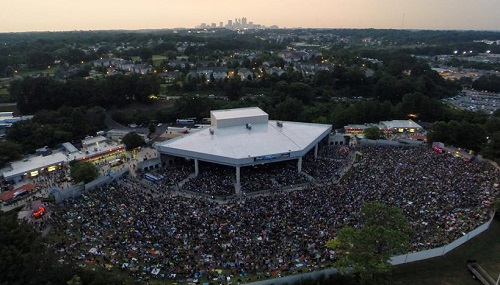
of the racetrack are covered by the back parking lot for a new state of the art Amphitheatre that opened there in 1989. Several companies have had naming rights to the Amphitheatre over the years, some are Coca-Cola, Aarons, and others. Many famous acts have performed. Just to name a few: Beach Boys; Tom Petty; The Who; Elton John and many, many others. This writer saw Styx and Pat Benatar there and the sound was phenomenal. Currently a road crosses the turn two, and the front stretch was paved to become an access road to Lakewood Avenue. Most of the lake has been filled.
All Photos copyright and are property of their respective owners
